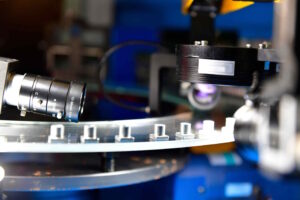Determination of petroleum hydrocarbons in soil continues to be an area of interest for scientists as they are the most common contaminants that are toxic to human and environmental receptors. These contaminants include various molecules that are grouped into aliphatic and aromatic hydrocarbons. Generally, initial field-based soil analysis is non-specific and, while useful, the results are normally supplemented with those of more accurate and precise lab-based techniques. Here Paul Vanden Branden, director and product manager at laboratory equipment supplier SciMed, discusses the performance of field-based non-dispersive infra-red spectroscopy (NDIRS) technology for petroleum hydrocarbon determination compared to traditional lab-based methods.
Typically, the analysis of oil-contaminated soils during site investigation and remediation involves a range of non-specific field-based screening techniques and specific lab-based fingerprint techniques completed off-site by commercial laboratories using certified analytical methods.
Typical non-specific field-based techniques include NDIRS, portable gas chromatography coupled with mass spectroscopy (GC-MS), ultra-violet fluorescence spectroscopy (UVFS), visible-near infrared (vis-NIR) spectroscopy, Fourier-transform infrared (FTIR) spectroscopy and photo-ionisation detection (PID). These are used to screen total petroleum hydrocarbons (TPH), quantify aliphatic and aromatic hydrocarbons during site investigation, identify potential hydrocarbon concentration hotspots and compare TPH concentrations in the environmental.
Generally, the lab-based fingerprint techniques used are either GC-MS or high-performance liquid chromatography coupled to mass spectrometry (HPLC-MS). These provide in-depth data into aliphatic and aromatic hydrocarbon speciation, qualitative and quantitative hydrocarbon degradation due to weathering or engineered remediation, and have high sensitivity and accuracy for risk indicator compounds, which is required to meet regulatory requirements.
While the lab-based fingerprint techniques offer high accuracy and precision, the procedures involved are often time-consuming and expensive. Therefore, they are not seen as cost-effective methods for decision making needed during site investigation, remediation monitoring and validation.
Over the past decade, various field-based analytical technologies have been developed, expediting hydrocarbon determination on site and increasing the number of soil samples that can be analysed at lower cost. However, more data is needed before these can be widely adopted, such as their performance and accuracy for different soil types, different levels of contamination and different fuel types. Furthermore, comparison of their ability to quantify different hydrocarbon groups for risk assessment purposes and evaluation of whether they can offer a good alternative to lab-based technologies for remediation monitoring and validation is still limited.
Field-based NDIRS
In analytical chemistry, extraction procedures aim to separate the analyte quickly, quantitatively and using as little solvent as possible. A recent report by Concawe outlined how solvent-based extraction field technologies, including NDIRS, performed well for the detection and quantification of TPH between 100 and 10,000 mg kg-1, independent of soil type and fuel type. The NDIRS instrument used in Concawe’s study was the Infracal 2 ATR-SP TPH analyser, which can perform TPH determination of hydrocarbons in five to ten minutes, significantly faster than lab-based GC-MS.
For the experiments covered in Concawe’s report, scientists used a hexane extraction method, adding 1% v/w to soil samples and shaking them for two minutes. This extract was cleaned using activated silica gel and Whatman no. 40 filter paper. For level three spiked soils, the extracts were further diluted five times in accordance with the Infracal 2’s detection range. Before each measurement, the attenuated total reflectance (ATR) crystal was cleaned with 99.9% isopropanol and zeroed every hour. To measure a sample, 60 μL was deposited into the ATR crystal, and the solvent was given time to evaporate before the measurement was taken.
The report concluded that the NDIRS field test provides GC-MS comparable TPH recoveries and meets the performance requirements for many regulatory standards. This means scientists can use the Infracal 2, which SciMed supplies, to conduct cost-effective petroleum hydrocarbon analysis on-site, without outsourcing to commercial analytical labs.
To speak to one of SciMed’s team about how the Infracal can help you in your application, fill out an enquiry form on the company’s website.

 Instrumentation Monthly Test | Measurement | Control
Instrumentation Monthly Test | Measurement | Control










